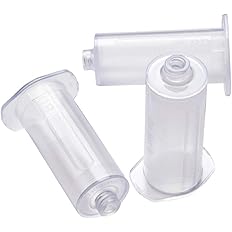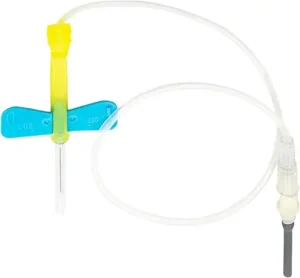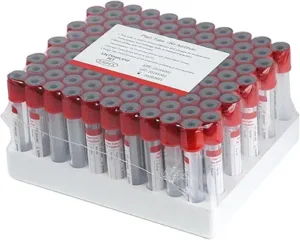BD Vacutainer is a brand of vacuum blood collection tubes commonly used in medical and laboratory settings for drawing blood samples. These tubes are designed to safely and efficiently collect blood from a patient, allowing healthcare professionals to conduct a variety of tests, such as blood counts, chemical analyses, and blood typing.
Key Features of BD Vacutainer:
-
Vacuum-Sealed Design:
- The BD Vacutainer tubes are pre-sealed and vacuumed, which helps to draw the exact amount of blood required for testing once the tube is inserted into a vein. This minimizes the risk of error in the collection process.
-
Color-Coded Tops:
- The BD Vacutainer tubes come with different colored caps, each indicating the type of additive inside the tube, which is used for specific tests. These additives might include anticoagulants, clot activators, or preservatives, which are critical in preparing the blood sample for various laboratory tests.
Common colors and their uses include:
- Red: No additive (for serum collection).
- Lavender/Purple: EDTA (for hematology tests).
- Blue: Sodium citrate (for coagulation studies).
- Green: Heparin (for plasma collection).
- Yellow: Acid citrate dextrose (ACD) or sodium polyanethol sulfonate (SPS), used for different purposes like blood cultures or blood bank testing.
-
Various Tube Sizes:
- BD Vacutainer tubes come in various sizes, usually ranging from 2 mL to 10 mL or more, depending on the volume of blood required for the test.
-
Safety Features:
- Many BD Vacutainer systems include BD Vacutainer Safety-Lok or other safety mechanisms that prevent accidental needle sticks. This is especially important in preventing exposure to bloodborne pathogens in clinical environments.
Types of BD Vacutainer Tubes:
-
Plastic Tubes:
- These are flexible and less prone to breakage, making them safer to handle, especially in high-volume testing environments.
-
Glass Tubes:
- Glass tubes are often used for more sensitive tests, where material interactions between the tube and blood might interfere with results. Glass tubes are sometimes preferred for certain serum or blood culture tests.
-
Capillary Tubes:
- Small tubes used for micro-sample collection, often when the patient is an infant or when only a small amount of blood is required.
Uses of BD Vacutainer:
- Blood Collection: BD Vacutainer tubes are primarily used for drawing blood for various medical tests, such as complete blood counts (CBC), blood glucose levels, blood cultures, and more.
- Hematology Testing: Tubes with EDTA (purple cap) are used in hematology to prevent clotting and preserve blood cells for testing.
- Coagulation Studies: Blue-capped tubes, which contain sodium citrate, are used for tests involving blood clotting, such as PT (Prothrombin Time) or PTT (Partial Thromboplastin Time).
- Serology and Chemistry Tests: Tubes with no additive (red cap) or clot activators are used to collect serum for tests like liver function tests, thyroid tests, or blood banking.
Benefits of BD Vacutainer:
- Convenience: The vacuum system reduces the need for manual blood drawing, making the process easier and faster for healthcare professionals.
- Standardization: BD Vacutainers are designed for standard blood collection procedures, ensuring consistency and accuracy in lab results.
- Safety: The addition of safety features like retractable needles or protective mechanisms helps reduce the risk of needlestick injuries.
- Quality and Reliability: BD Vacutainer tubes are known for their high quality and are trusted by medical professionals worldwide for their consistent performance




Reviews
There are no reviews yet.